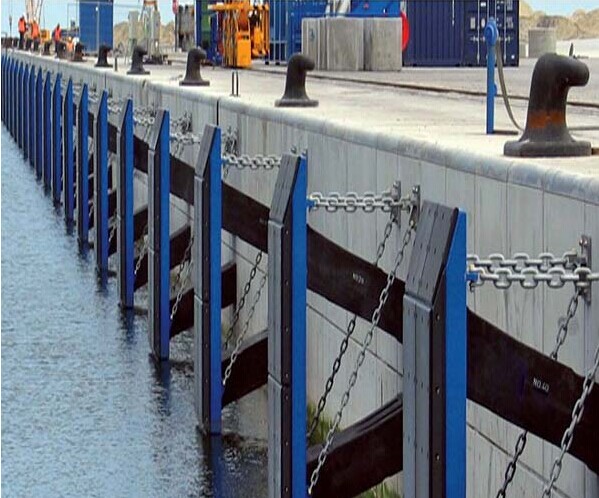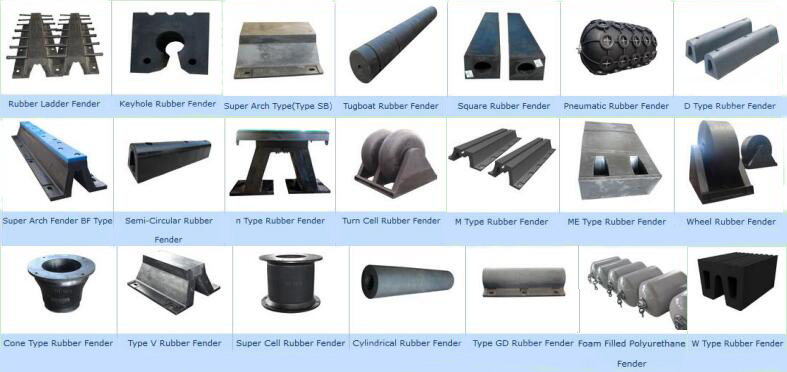How to Choose a Suitable Marine Rubber Fender

The marine rubber fenders are installed on dock or vessel to protect both the vessel and the dock from major failure during the berthing period. They can absorb great energy generated from collisions between dock and vessel or vessel and vessel.
There are various fender types that can be used on the port, for instance: Ladder-type fender, V-type, A-type, M-type, keyhole, and super cone. Tugboat fenders, however, are installed on tugboats to protect vessels from major failure in the incidence of a crash.

Generally speaking, there are 4 factors to consider to buy a suitable rubber fender.
1. Vessel dimensions
Vessel dimensions, in terms of type and dead weight tonnage is the first factor to consider to decide which type and how big size the fender should be. The larger the vessel, the larger the required fenders will be. They can be selected depending on various situations. In most cases, V type fender which are equipped by PE pads are more suitable when they have large contact area. Super cell and super cone fender can be ideal if energy absorption requirement is super big. A, V, M, LMD or cylindrical type are chosen to protect the port wall, for the ports that are used for the small to medium vessel.
For the rubber size, you can refer to the data sheet on our website or leave your questions on the page.
2. Port type
The second significant factor that influencing the decisions is the port type. There are 4 port types namely dolphin, monopile, jetty and quay wall. In the dolphin terminal, super cell fender is most used. For the other 3 types, medium energy absorption fenders are enough such as V or M type.
3. Installation environment
The installation environment is where rubber fenders are installed. Key factors to consider are including tide height and level and how strong the wind is to influence the waves. If the port has strong winds and waves, elongated V type fender, super cell or super cone fender equipped by frontal frames are more suggested to adapt to the environment.
4. Berthing process
The speed of the vessel and the berthing angle are 2 different factors to consider in safe berth. They can also influence the type and size of rubber fenders. If the speed is fast, the bigger size is needed. The angle also influences the fender type. We have data sheet for your refer to help you choose the best fender.
If you want to customize, more detailed information are kindly needed to advise as below:
(You can download and fill in it at the page end, then send us to recommend) 
Any questions or inquires, please feel free to ask us.
/uploads/soft/20181224/Fender System Design Condition.doc
For more information, please visit http://www.cqhisea.com/product.php?cid=90

